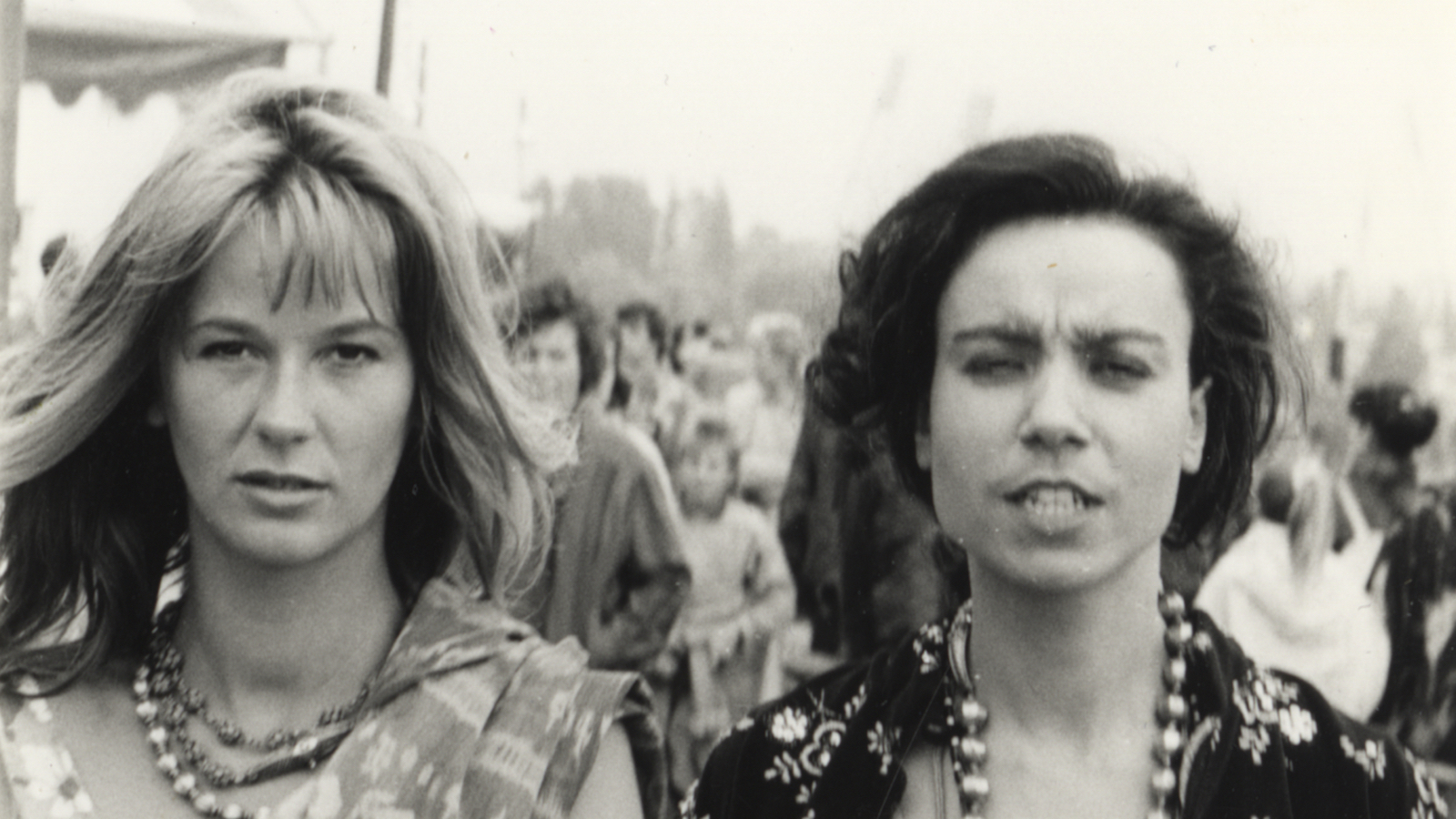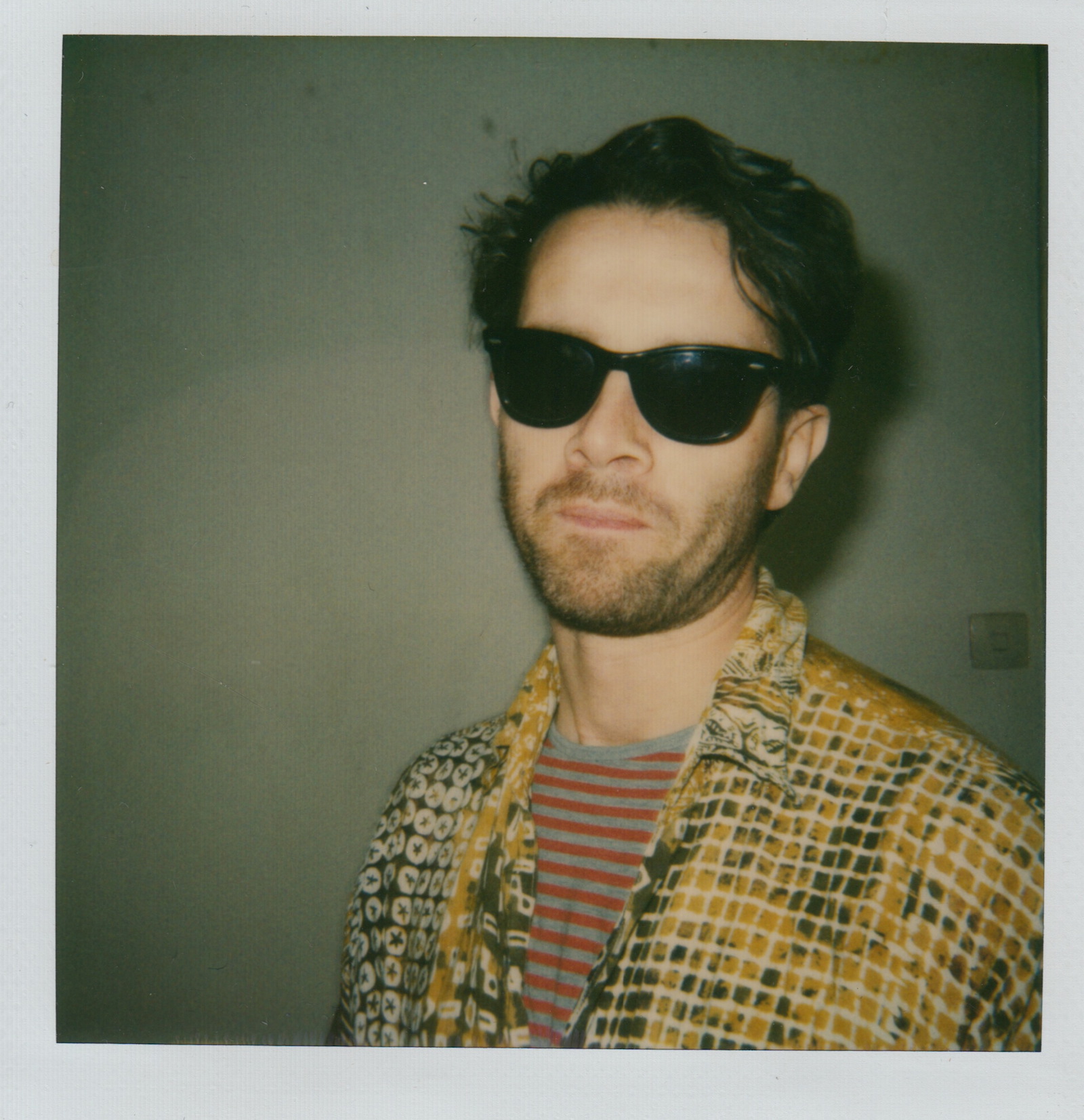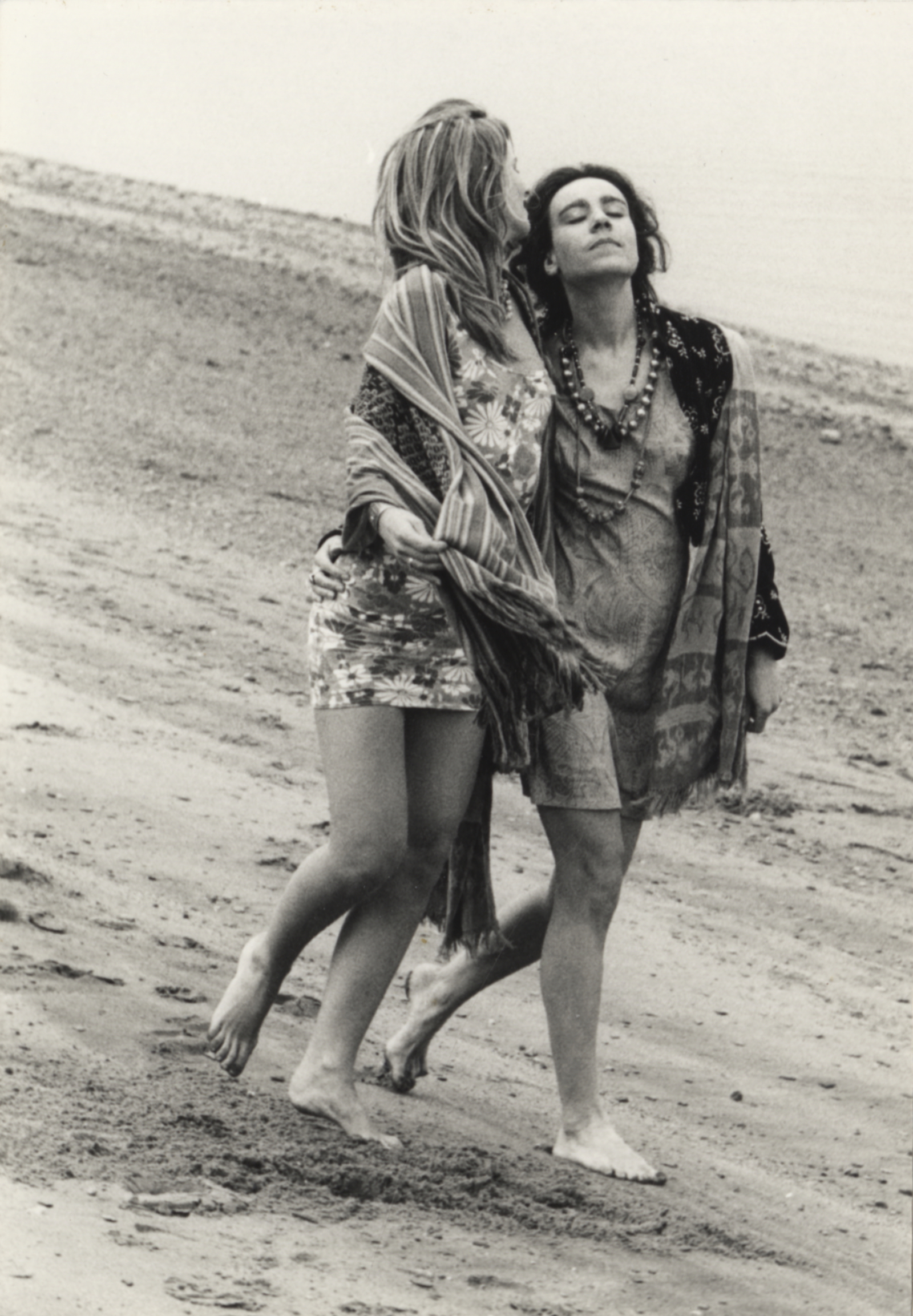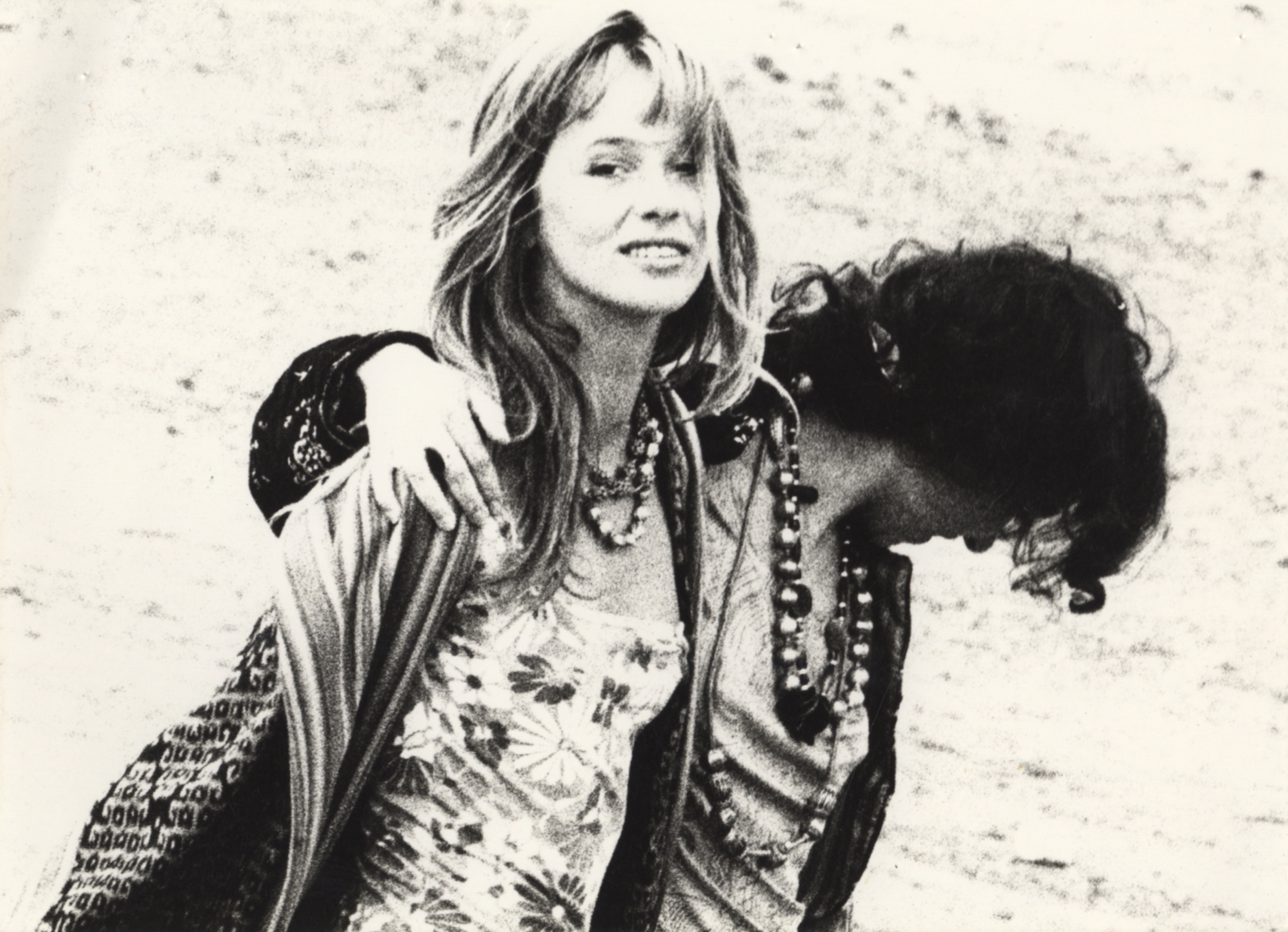- Saâda Bonaire's recently unearthed '90s album is brilliantly absurd and ahead of its time.
- In 1984, EMI Germany's A&R department was faced with a conundrum. After accidentally exceeding their allotted budget, the team was forced to choose between releasing a record from global pop sensation Tina Turner or putting out the debut from a brand new synth pop group called Saâda Bonaire. At this point, Turner was quickly becoming an A-list celebrity, and had just gone multi-platinum with the track "Private Dancer." Conversely, Saâda Bonaire was fronted by a duo of talk-singing fashionistas, whose sound landed somewhere in the gray area between the gritty funk of ESG and the eclectic no wave of Lizzie Mercier Descloux. The solution was, unfortunately, obvious: put the money towards Turner, and drop a lone single from Saâda Bonaire, otherwise killing the scheduled rollout of their first full-length. Shortly after the release of their debut, "You Could Be More As You Are," Saâda Bonaire disappeared from the spotlight—a relic of a major label's financial mishap, lost to time.
Saâda Bonaire was conceived by Bremen, Germany DJ Ralph "Von" Richthoven in 1982. The idea was to blend the sounds of new wave, dub, disco and reggae and to create dance floor-friendly punk music. He enlisted two non-vocalists to execute his vision. One was his fiancée, Stephanie Lange, along with her pal Claudia Hossfeld. They were supported by a multinational backing band, whose lineup often exceeded 20 members, many of whom did not even operate within the same musical key. Merging these trendy influences with the stylings of Turkish, Kurdish and Arabian music, the crew made swaggering, club-adjacent tracks on their first album, which was produced by London-based dub musician Dennis Bovell at Kraftwerk's studio in Cologne. The end result, a self-titled album, was singular, but also as quintessentially ‘80s as one might expect.
Although it seemed that the project's recorded legacy was destined to die on the cutting room floor of some long-forgotten corporate office space, in 2012, Berlin dancepunk band Thieves Like Us stumbled upon the group's ill-fated single and wondered what happened to Saâda Bonaire. A year later, that band's label—iconic Brooklyn indie imprint Captured Tracks—got their hands on the lost album. They put it out as a double-LP, and the unexpected reissue quickly attained cult classic status.
Until recently, it seemed that we'd heard everything Saâda Bonaire had put out. It was known that the group had continued to collaborate until 1994, but Richthoven claimed that all of their post-1986 music had been destroyed. Since he couldn't sign the project, he didn't see much of a point in hanging onto those tapes. So he was surprised when he stumbled on a well-worn cassette at a relative's house with the words "Saâda Bonaire ‘91" written on it. Although this specific tape was too degraded for playback, it inspired him to reach out to his ex-bandmates, one of whom had also found a number of these tapes in an old suitcase. The tapes held 12 songs that the crew worked on in the early ‘90s. "The recovery of the recordings was an absurd stroke of luck," Richthoven said in an interview with Captured Tracks, who are putting out this newfound record under the title 1992.
1992 was recorded after a five-year hiatus, as the duo started to record in a garage beneath Richthoven friend—jazz guitarist Mike Ellington's—family's sex shop. "To access the studio we had to navigate a labyrinth of porno tapes, rubber dolls, latex suits and other 'prosthetics,'" Richthoven told Captured Tracks. On top of that, he and Lange had separated since being dropped from EMI. "Around 1986, I finally took the long overdue step of moving out of Ralph's flat," Lange told Captured Tracks. "I needed to build a new life–one independent of Ralph." Although Lange enrolled in art school and tried making music alone, she didn't find solo songwriting very enjoyable. These tracks were recorded after the couple made the transition from partners to exes to friends-turned-collaborators.
Some elements of this new collection sound like the old Saâda Bonaire, but there are key differences, including a new singer Andrea Ebert, filling in for Claudia Hossfeld. And where the last LP wore its '80s era on its sleeve, this one has obvious trappings of the early '90s. The stylings of trip-hop, rap and house especially shine through, although you can still hear the impact of dub and Eastern music. "Move From The Heart" is based around a four-on-the-floor drum machine groove and plonky synth chords that support the somewhat clunky refrain: "We wanna dance to the African rhythm / We wanna dance to the African beat."
An aesthetically-inclined act, there's a chic quality to most of Saâda Bonaire's music. On 1992, their penchant for stylishness is as prominent as ever. There's a swagger to the album that could pass for the slightly-off-kilter work of dance floor hitmakers like Deee-Lite or Crystal Waters. "7th House" is centered on smoky organ stabs and propulsive percussion. "Running" could be a Sneaker Pimps track, even though it was recorded at least five years before that band's iconic debut. "Most of the acts we wanted to be associated with came from either the USA or the UK," Richthoven said. He hoped to sign this album to an American, English, or French label, so they could be associated with artists including the S.O.S. Band, Gang Starr and Soul 2 Soul.
Lange and Hossfeld's unique chemistry on the first record stemmed from the fact that neither of them could really sing. Thanks to Ebert's slightly more refined talents, 1992 boasts more melodic vocals than those on the material we heard before this, for better or for worse. Their self-titled album was so memorable because of the weirdness of the drawling voices. However, it's definitely satisfying to hear Saâda Bonaire lean into their more commercial side. They even called upon Turkish belly dancer Can Sibel to provide backing vocals on most of the tracks.
The influence of Western Asian music is especially clear on "Woman," which contrasts soaring, Arabian-indebted ad libs from Sibel with a more straightforward R&B hook. "What makes a woman / What makes a man," Lange and Ebert harmonize over the clatter of an echoing groove. "That's Right" offsets calmly spoken verses with an oblique, but intriguing chorus, and "So Many Dreams" is an excellent slice of blissed-out dance music that eventually disintegrates into a glitchy breakdown. Like so many of the cuts on this "new" album, it sounds deceptively contemporary, even futuristic.
"When you work as a club DJ for decades, at some point you get a feel for what will be a hit and what won't. I always knew our tastes were a bit ahead of the times," Richthoven said when asked about the morose desperation that fueled his decision to keep making music, in spite of the fact that he couldn't find Saâda Bonaire the sustained record deal he yearned for.
Richthoven has always come across as something of a musical mad scientist, constantly toeing the line between disaster, absurdity and genius. 1992 finds this eccentric persona reaching a whole new level. A record shaped by heartbreak, forgiveness, frustration and maybe even a few sex toys, on paper, the story of Saâda Bonaire's unsuccessful ‘90s reunion might sound like Rob Reiner's 1984 film Spinal Tap repurposed for crate-digging Balaeric DJs instead of hair metal enthusiasts.
In spite of Saâda Bonaire's notably over the top energy, the work they produced after the ‘80s exudes a sense of brilliance. Like the other unearthed record that came before this one, 1992 is a bit ludicrous, but one-of-a-kind in how it combines the sounds of radio friendly pop with a host of globetrotting inspirations.
Tracklist01. Woman
02. To Know You Is To Love You
03. Extremes
04. So Many Dreams
05. Running
06. Okay It's Over
07. That's Right
08. Lovelife
09. Your Prince
10. 7th House
11. Move From The Heart
12. Follow Your Mind
Photos: Andreas Weiss
 1992 was recorded after a five-year hiatus, as the duo started to record in a garage beneath Richthoven friend—jazz guitarist Mike Ellington's—family's sex shop. "To access the studio we had to navigate a labyrinth of porno tapes, rubber dolls, latex suits and other 'prosthetics,'" Richthoven told Captured Tracks. On top of that, he and Lange had separated since being dropped from EMI. "Around 1986, I finally took the long overdue step of moving out of Ralph's flat," Lange told Captured Tracks. "I needed to build a new life–one independent of Ralph." Although Lange enrolled in art school and tried making music alone, she didn't find solo songwriting very enjoyable. These tracks were recorded after the couple made the transition from partners to exes to friends-turned-collaborators. Some elements of this new collection sound like the old Saâda Bonaire, but there are key differences, including a new singer Andrea Ebert, filling in for Claudia Hossfeld. And where the last LP wore its '80s era on its sleeve, this one has obvious trappings of the early '90s. The stylings of trip-hop, rap and house especially shine through, although you can still hear the impact of dub and Eastern music. "Move From The Heart" is based around a four-on-the-floor drum machine groove and plonky synth chords that support the somewhat clunky refrain: "We wanna dance to the African rhythm / We wanna dance to the African beat." An aesthetically-inclined act, there's a chic quality to most of Saâda Bonaire's music. On 1992, their penchant for stylishness is as prominent as ever. There's a swagger to the album that could pass for the slightly-off-kilter work of dance floor hitmakers like Deee-Lite or Crystal Waters. "7th House" is centered on smoky organ stabs and propulsive percussion. "Running" could be a Sneaker Pimps track, even though it was recorded at least five years before that band's iconic debut. "Most of the acts we wanted to be associated with came from either the USA or the UK," Richthoven said. He hoped to sign this album to an American, English, or French label, so they could be associated with artists including the S.O.S. Band, Gang Starr and Soul 2 Soul.
1992 was recorded after a five-year hiatus, as the duo started to record in a garage beneath Richthoven friend—jazz guitarist Mike Ellington's—family's sex shop. "To access the studio we had to navigate a labyrinth of porno tapes, rubber dolls, latex suits and other 'prosthetics,'" Richthoven told Captured Tracks. On top of that, he and Lange had separated since being dropped from EMI. "Around 1986, I finally took the long overdue step of moving out of Ralph's flat," Lange told Captured Tracks. "I needed to build a new life–one independent of Ralph." Although Lange enrolled in art school and tried making music alone, she didn't find solo songwriting very enjoyable. These tracks were recorded after the couple made the transition from partners to exes to friends-turned-collaborators. Some elements of this new collection sound like the old Saâda Bonaire, but there are key differences, including a new singer Andrea Ebert, filling in for Claudia Hossfeld. And where the last LP wore its '80s era on its sleeve, this one has obvious trappings of the early '90s. The stylings of trip-hop, rap and house especially shine through, although you can still hear the impact of dub and Eastern music. "Move From The Heart" is based around a four-on-the-floor drum machine groove and plonky synth chords that support the somewhat clunky refrain: "We wanna dance to the African rhythm / We wanna dance to the African beat." An aesthetically-inclined act, there's a chic quality to most of Saâda Bonaire's music. On 1992, their penchant for stylishness is as prominent as ever. There's a swagger to the album that could pass for the slightly-off-kilter work of dance floor hitmakers like Deee-Lite or Crystal Waters. "7th House" is centered on smoky organ stabs and propulsive percussion. "Running" could be a Sneaker Pimps track, even though it was recorded at least five years before that band's iconic debut. "Most of the acts we wanted to be associated with came from either the USA or the UK," Richthoven said. He hoped to sign this album to an American, English, or French label, so they could be associated with artists including the S.O.S. Band, Gang Starr and Soul 2 Soul. Lange and Hossfeld's unique chemistry on the first record stemmed from the fact that neither of them could really sing. Thanks to Ebert's slightly more refined talents, 1992 boasts more melodic vocals than those on the material we heard before this, for better or for worse. Their self-titled album was so memorable because of the weirdness of the drawling voices. However, it's definitely satisfying to hear Saâda Bonaire lean into their more commercial side. They even called upon Turkish belly dancer Can Sibel to provide backing vocals on most of the tracks. The influence of Western Asian music is especially clear on "Woman," which contrasts soaring, Arabian-indebted ad libs from Sibel with a more straightforward R&B hook. "What makes a woman / What makes a man," Lange and Ebert harmonize over the clatter of an echoing groove. "That's Right" offsets calmly spoken verses with an oblique, but intriguing chorus, and "So Many Dreams" is an excellent slice of blissed-out dance music that eventually disintegrates into a glitchy breakdown. Like so many of the cuts on this "new" album, it sounds deceptively contemporary, even futuristic.
Lange and Hossfeld's unique chemistry on the first record stemmed from the fact that neither of them could really sing. Thanks to Ebert's slightly more refined talents, 1992 boasts more melodic vocals than those on the material we heard before this, for better or for worse. Their self-titled album was so memorable because of the weirdness of the drawling voices. However, it's definitely satisfying to hear Saâda Bonaire lean into their more commercial side. They even called upon Turkish belly dancer Can Sibel to provide backing vocals on most of the tracks. The influence of Western Asian music is especially clear on "Woman," which contrasts soaring, Arabian-indebted ad libs from Sibel with a more straightforward R&B hook. "What makes a woman / What makes a man," Lange and Ebert harmonize over the clatter of an echoing groove. "That's Right" offsets calmly spoken verses with an oblique, but intriguing chorus, and "So Many Dreams" is an excellent slice of blissed-out dance music that eventually disintegrates into a glitchy breakdown. Like so many of the cuts on this "new" album, it sounds deceptively contemporary, even futuristic. "When you work as a club DJ for decades, at some point you get a feel for what will be a hit and what won't. I always knew our tastes were a bit ahead of the times," Richthoven said when asked about the morose desperation that fueled his decision to keep making music, in spite of the fact that he couldn't find Saâda Bonaire the sustained record deal he yearned for. Richthoven has always come across as something of a musical mad scientist, constantly toeing the line between disaster, absurdity and genius. 1992 finds this eccentric persona reaching a whole new level. A record shaped by heartbreak, forgiveness, frustration and maybe even a few sex toys, on paper, the story of Saâda Bonaire's unsuccessful ‘90s reunion might sound like Rob Reiner's 1984 film Spinal Tap repurposed for crate-digging Balaeric DJs instead of hair metal enthusiasts.
"When you work as a club DJ for decades, at some point you get a feel for what will be a hit and what won't. I always knew our tastes were a bit ahead of the times," Richthoven said when asked about the morose desperation that fueled his decision to keep making music, in spite of the fact that he couldn't find Saâda Bonaire the sustained record deal he yearned for. Richthoven has always come across as something of a musical mad scientist, constantly toeing the line between disaster, absurdity and genius. 1992 finds this eccentric persona reaching a whole new level. A record shaped by heartbreak, forgiveness, frustration and maybe even a few sex toys, on paper, the story of Saâda Bonaire's unsuccessful ‘90s reunion might sound like Rob Reiner's 1984 film Spinal Tap repurposed for crate-digging Balaeric DJs instead of hair metal enthusiasts. In spite of Saâda Bonaire's notably over the top energy, the work they produced after the ‘80s exudes a sense of brilliance. Like the other unearthed record that came before this one, 1992 is a bit ludicrous, but one-of-a-kind in how it combines the sounds of radio friendly pop with a host of globetrotting inspirations.
In spite of Saâda Bonaire's notably over the top energy, the work they produced after the ‘80s exudes a sense of brilliance. Like the other unearthed record that came before this one, 1992 is a bit ludicrous, but one-of-a-kind in how it combines the sounds of radio friendly pop with a host of globetrotting inspirations.